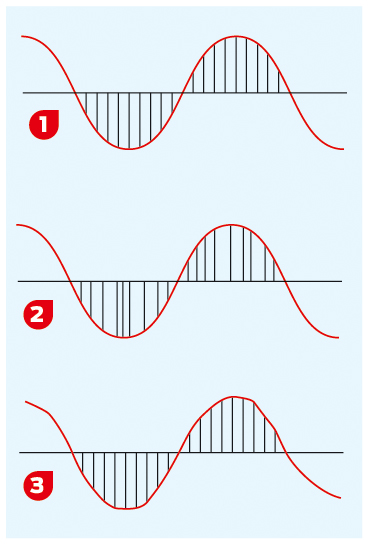The A to Z of computer music: J
Another round-up of digital production terminology

Get acquainted with some more essential computer music terms as our lexical tour continues. This edition is brought to you by the letter J.
Jack
Originally invented in the 19th century for use in telephone switchboards, the 1/4-inch jack plug/socket (born alongside its 1/8-inch 'minijack' sibling) is the most ubiquitous of professional audio equipment connection standards.
1/4-inch jacks are available in two contact configurations: TRS (tip, ring, sleeve) and TS (tip, sleeve). Each contact carries its own signal, with TS jacks used for unbalanced mono connections and TRS jacks used for unbalanced stereo or balanced mono connections. (1/8-inch jacks also come in TRRS form, with a second ring enabling the addition of a microphone input signal for use on mobile phone headsets.)
Balanced jacks are the preferred standard in pro audio applications, using balancing circuitry in order to do away with electrical hum and ground noise. Unbalanced jacks are usually only found connected to guitars, hardware synthesisers and other line/instrument level devices.

JACK
The circular acronym for JACK Audio Connection Kit, a cross-platform API that enables applications running under Linux, Windows and OS X (amongst other operating systems) to share audio devices and pass audio streams to and from each other.
Primarily of interest to Linux-based musicians, it's essentially comparable to ASIO (Windows) and CoreAudio (OS X), providing low-latency inter-app and server-based plugin- style audio streaming (and MIDI connectivity) between DAWs, audio editors, plugins, etc.
Jitter
When the periodic output of a digital clock deviates from total regularity, the deviation is referred to as jitter. For computer musicians, jitter is an issue with audio interfaces, in which it causes imperfect sampling/reproduction of digital audio.
Want all the hottest music and gear news, reviews, deals, features and more, direct to your inbox? Sign up here.
Fortunately, these days the digital clocks in even the cheapest of audio interfaces are incredibly accurate and consistent, so jitter isn't the issue it once was.

- A jitterless sampling of a sine wave.
- Sampling a sine wave with jitter - note the erratic spacing of sample points.
- The sine wave from diagram 2 as viewed in a wave editor, where the samples are presumed to be of equal spacing - the spacing/ amplitude errors cause the wave to be imperfect.
Jog Wheel
A feature on certain MIDI (and video editing) control surfaces, the jog wheel is a large rotary controller used to move the playback head in a DAW or audio editor left and right.
Using it, you can shuttle the head quickly through a DAW project or - depending on your software and surface - scrub backwards and forwards through an audio file, for example, analogous to manually controlling the reels on a tape machine. Some DAWs also feature a virtual onscreen jog wheel.
Just Intonation
The standard tuning system used in Western music is 12-tone equal temperament (12 TET) - a non-justly intonated scheme. Here, the octave is divided into 12 equally spaced pitches. This is easy to understand but has the drawback that most musical intervals are not actually 100% in tune, often resulting in a subtle 'beating' when playing chords (a bit like the effect produced by unison detune in a synth). For instance, in a 12 TET major third interval, the ratio between the two notes' frequencies is about 1.26.
A more harmonious result could be had using a ratio of 1.25, which is equivalent to the simple fraction 5/4. Thus the wave cycles of the two notes would 'sync up' precisely every four cycles, giving a more solid sound with no beating. This is just intonation. There are alternate tuning schemes to facilitate the playing of JI intervals; the caveat is that to make one key justly intonated, other chords/keys may not be usable due to them being way out of tune. Thus we can see the advantage of 12-tone equal temperament: every musical key is equally out of tune, so we can easily change key and play various chords across those keys with predictable results.
Some soft synths (including most of LinPlug's range, u-he Zebra, Spectrasonics Omnisphere and Cakewalk Z3TA+) are able to load .TUN files, which can retune the 12 notes to any system you like, including justly inton
Computer Music magazine is the world’s best selling publication dedicated solely to making great music with your Mac or PC computer. Each issue it brings its lucky readers the best in cutting-edge tutorials, need-to-know, expert software reviews and even all the tools you actually need to make great music today, courtesy of our legendary CM Plugin Suite.
